Conversation
a useless task it seems
UK-based Ph.D. researcher, lecturer, and writer Nicola Bozzi joined the artist duo Midgray (Kris Blackmore and Simon Boas) in conversation about their exhibition a useless task it seems, presented at Carnation Contemporary in December 2022. The following transcript is edited for length and clarity.

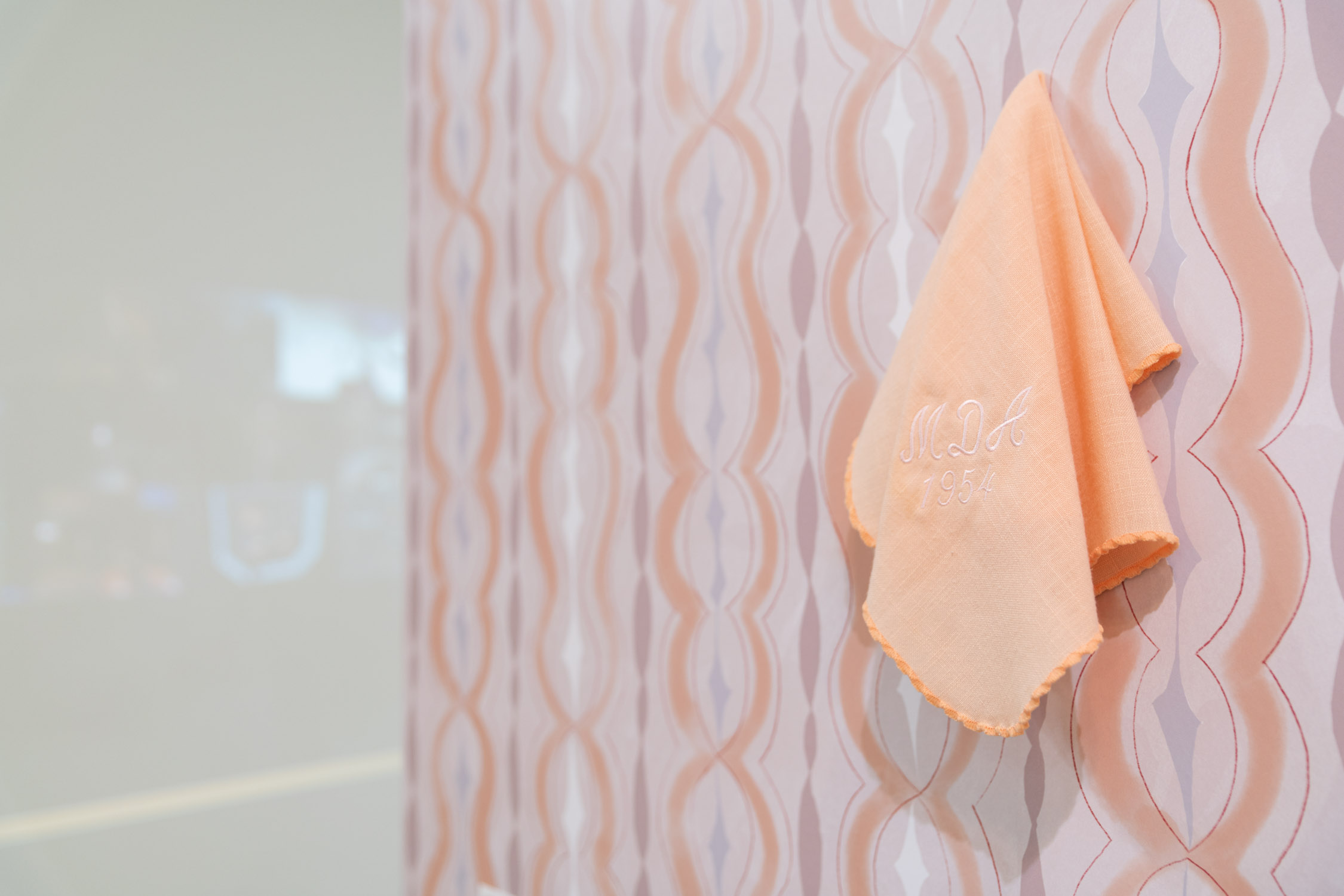
Nicola Bozzi I wanted to ask you why a useless task it seems? What does it suggest?
Kris Blackmore The title comes from the first line of a poem called I Sit and Sew by Alice Moore Dunbar-Nelson who was a Black American poet of the Reconstruction era: "I sit and sew a useless task, it seems.''
Obviously, I feel like that relates to my work in a lot of ways because there's literally sewing involved. A lot of the time when I'm thinking about my work I'm thinking about how throughout history sewing, needlework, and other traditional craft has been seen as kind of just a hobby and degenerated by an arts culture that is inherently patriarchal.
It’s also seen within the home as something that I think is necessary, but also not important, in a way. It gets seen as like, “Oh, that's just something Mom does, so it's not that useful. It's not as useful as Dad who goes out and works every day to make money for the family.” And so I think a lot about where that situates the practice in society.
And then I think there's also another aspect of it, which is that Simon and I tend to make art that's a little bit on the more social-activist-y side of things. So a lot of the time when I think about my work, there's this question of, “What is this doing for anyone? What is this doing for society? Is it useless?” I felt that related to Simon's work as well and suggested it as a title to him.
And Simon, why did you think that title was the one?
Simon Boas It really spoke to me. There's that paragraph that we reproduced on the posters for the show.
I sit and sew—a useless task it seems,
My hands grown tired, my head weighed down with dreams—
The panoply of war, the martial tred of men,
Grim-faced, stern-eyed, gazing beyond the ken
Of lesser souls, whose eyes have not seen Death,
Nor learned to hold their lives but as a breath—
But—I must sit and sew.
There's something about the machines and all the violence of what would be seen as a man's world that goes on.
The writer is supposed to have her place in the home, sewing, while everything that affects her and everyone she loves is totally out of her control. There's definitely language that discusses violence in there. And a lot of the work that I've been doing over the past year or so has been about sitting at home and consuming news. There have always been horrors in the news, but it feels like it's hit more of a fever pitch. Maybe that change is internal to me, but I feel like other people would say the same thing over the past couple of years since we've started staying home more and interacting with the world more via the internet.
So, I've got these works that are around news cycles and the way it's supposed to be balanced to just make you accept things because, as if to say in the end it's all going to be okay. I've also got some work in there that's about lifelong numbing to violence through entertainment. There's my piece that's about first-person shooter video games. Playing games like that is something that I still enjoy doing, but I can't square with myself why I do. It's something I've been doing since I was a child.
Without going too deep on it, that's why the title spoke to me. It's got a lot to do with the world that is being kept from you, yet still very much affects you.
NB I think that's very interesting. I think it suggests that you are embedded in these practices—also in terms of what your previous show Slow Friction was about—of low-key resistance, right? It's a sort of soft resistance, and it's kind of embedded within a particular media practice. Your current exhibition, I think, has these three themes that connect your previous work that I've seen. I would say one theme is visibility. I feel it’s bringing things into sight, right? And on one hand, there is this thread of data visualization—but perhaps now more than in Slow Friction it's really about the final output. It has a real presence because of its materiality, which is something else that I was thinking about. And also the political consequences of the information, right? So on one hand you've got the visualization of information that is openly available. And then you layering this sort of urgency onto it. What I'm getting at is this connection between the representation of data and political representation, right? Because this is a negotiation that considers the effects of your actions and other activists' work. So, this leads to a question that is very simple, and almost like a slogan, but I think it relates to your work: Is information actually power today? Because I was thinking about the representation of data and its representation politically and the situation in the U.S., of course, with women's rights. I'm even thinking of Twitter, and what happens with Elon Musk. So these things are making me think, “Okay, is information the core of power?”
KB So I think that's a yes and a no, because the very core of human liberation and our growth into political cultures and societies is rooted in information. I think that's just a fundamental part of achieving your freedom; having an understanding of how power works and how you can leverage what you have.
On the other hand—you were talking about Twitter—I think that too much information becomes disempowering. Separating the noise from what is actually useful information becomes a harder and harder task. For example, I know that there was a study recently that showed that, increasingly, mass protest movements are becoming less useful and aren’t achieving results.
But you'll find that's a big defense of social media, like it gets people information and they can connect as activists. And I think we're finding that maybe that's not necessarily inherently useful. Because it's not leading to outcomes that are actually helping us get to where we need to go.
Zeynep Tufekci's book Twitter and Tear Gas also covers that. It focuses a lot on the Arab Spring, which was one of those early movements where social media was touted as the core of organizing—though of course organizing in those countries had been going on for decades—and the mainstream media focused on it being a revolution where social media was at the helm. But then, you know, today we can look back and say that it didn't go as well as we thought it would. So I'm not convinced that the kind of information we're getting is quality information at the moment.
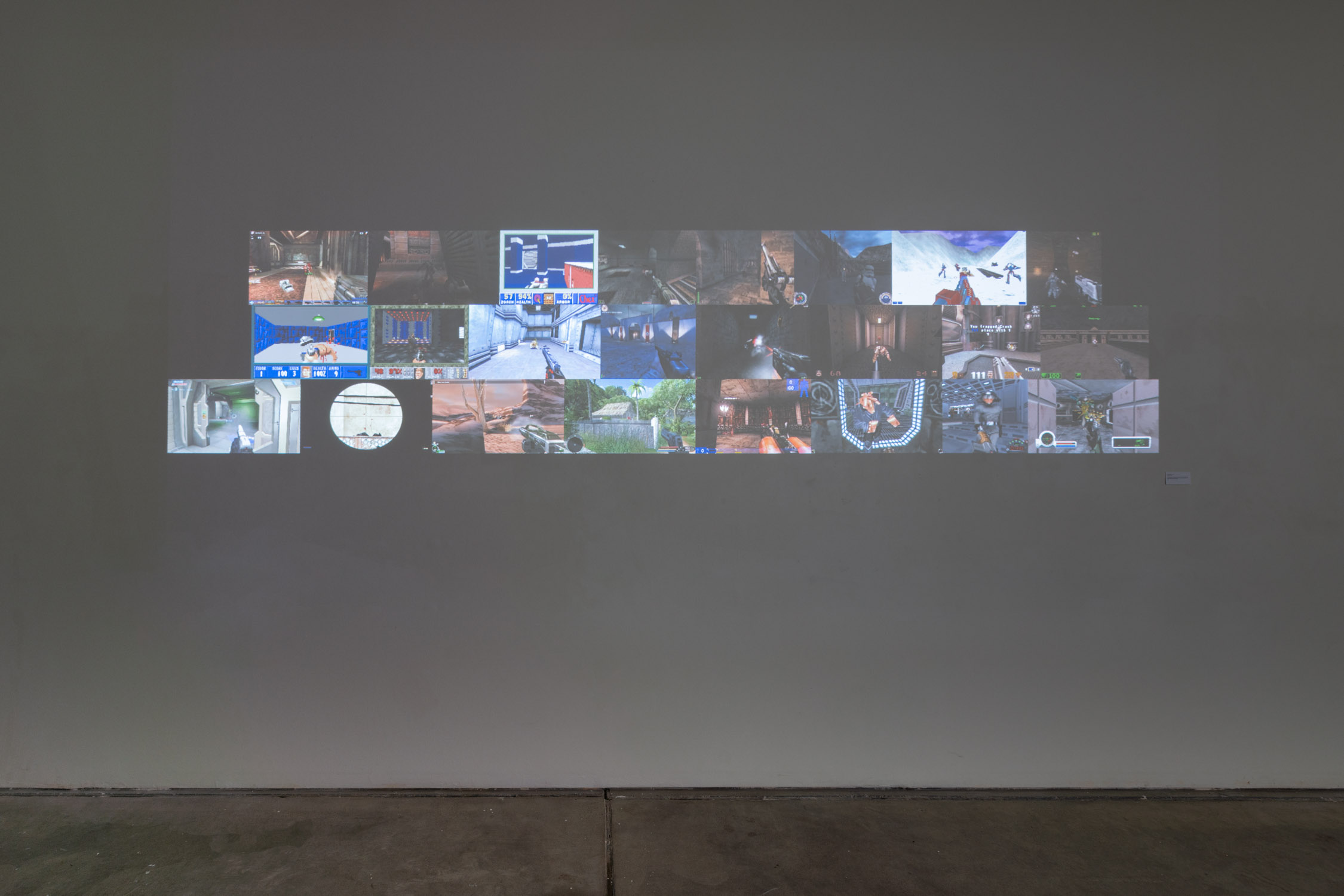
SB I think there are two axes to look at with your question, Nicola, or two ways to frame it. There’s the amount of information, and there’s the question of who gets power from that information. I love that question because it speaks to the conversations Kris and I had with each other as we made our work this past year.
We've talked about it like this: Kris’ recent work is about both the past and the future, whereas mine's about the present and none of it has a very sunny outlook. Kris, your work has a lot in it that seems to be about the absence of information being power wielded over someone else for subjugation, right?
KB Mm-hmm.
SB You’re doing this work about embedding information that, until this year, we took for granted. It’s medical information, how to induce an abortion, and things like that. Whereas the work I've been doing has been a bit more about the numbness from an overabundance of information, which isn't just, I don't believe, a natural occurrence. That the numbness hasn’t been calculated. It's a feature, not a bug. The work I've been doing with information from the New York Times, from the images, from the captions, from the headlines, and reading through all those–the sheer amount of information was kind of shocking. To think about how, outside of this project, I consume even more information than that every day. Most people will probably consume something like 30 to 100 news stories or headlines in some form every day. It all blends together and starts to lose its meaning.
So, is information power? I think for Kris's work, it's like you said, more of a yes and no. For mine, I would say it's yes, but not a yes for us; not for us at the other end of the power spectrum.
NB Yeah. Okay, I think that’s a good answer. Like, yes, it's power, but not for everybody, let's say. And also too much information is actually kind of wrong, right? It's not power. Because if we look at the abundance of information that was around in the first cycle of social media–all the emancipatory Twitter revolutions–it was a very big, optimistic idea in the power of social media to create transformation. And then there was a second cycle, which was around the Trump presidency with so much polarization resulting from the heightened distribution of information and also having so many independent different forms of information.
So there was a connection to another theme that I thought of for this particular show. As you, Simon, were saying: My work is about the present, whereas Kris's work is about the future and the past. And I was also thinking about two axes, the amount of information and who it empowers. Because on one hand there is this connection between different generations of women. In the U.S. you are repeating the same struggles, but kind of going back as well. Then there is this oppositional dynamic. That's a gender dynamic, and the first-person shooter video speaks to that. And so what I wanted to know is, what does that say about post-Roe America? Because you're making this exhibition at a particular moment. So what does it say about America now in terms of this juxtaposition of the gender oppositional axis, and then these other generational axes?
KB I think that the connection between Simon's work with the shooter project and my work is that oftentimes misogyny can be a warning sign for other oncoming political struggles and cultural upheaval. I think the signs were there with Gamergate and the #MeToo backlash. People didn't quite pay enough attention to understand it was a part of a bigger culture of violence and vitriol. Simon, can you talk a little bit about your perspective on that?
SB As you pointed out, Nicola, there is a pretty clear gender axis to some parts of the show. We've got a long-running thread of creating work about misogyny, about different forms of violence against women, and how it's internalized, normalized, and dismissed in different ways in our society. That's what our projects No in Disguise and Yes in Disguise have been about. Someone once said to me that that work is about what it means to grow up in a warrior culture. And that's something that stuck with me because it hadn't really been part of my thinking when we were making those projects, but I think that very much led to the work in our new show. There's a personal reflection there. It’s the way that we're brought up to view everything as a fight. As much as we want to say violence doesn't solve problems and we tell our kids that, we hardly reflect that value anywhere else in our society. Most of our entertainment is about violence. Online now, it seems many of our interactions are violent in some form or another.
The point I’m reaching for with the shooter project isn’t the obvious one–I don't believe that video games themselves cause violence. This work is a very personal project about how I've spent my time until I was about 18, yet I don't consider myself a violent person. But it doesn't change the fact I know a lot about guns without really ever having held one. I know a lot about what to expect from them. There's a connection in my brain between seeing gun violence on a screen and feeling some kind of positive response. I didn’t ask for that. That's what I want to investigate there.
And so it's really hard to look at that kind of media and how I've spent that time and not think that there isn't some kind of spillover into the rest of society. Just this past week we saw these reports saying that the leading cause of death for children in the US is now gun violence. To think that these things are isolated in any way is part of the reason we're still fighting these battles.
KB That's why the issue of gun violence is a feminist issue. Women are most likely to be murdered by intimate partners. Our children are most likely to be killed by a gun. And then that also connects to your work; when you're thinking about the worst part of the news day, that peak is often reflected as some sort of shooting. There seems to be one every day. So you wonder, “What's this mass violence event going to be?” When it comes to Context Collusion–the bell curve prints you made for this show–the highest points in those curves tend to be something about guns in our culture.
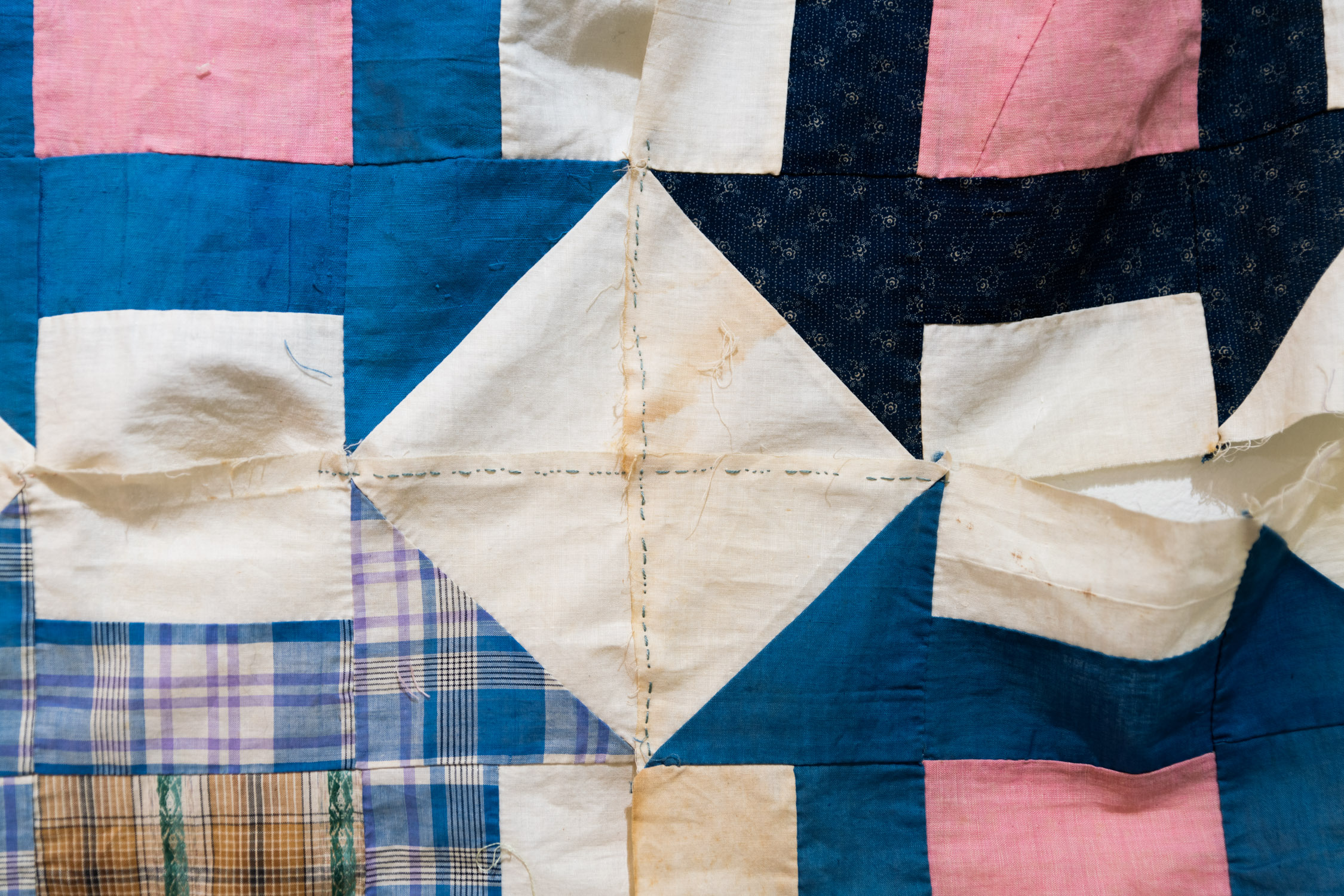
SB Yeah. You mean the normal distributions I made from New York Times images? I did actually choose which days to feature in those prints based on certain days with more dramatic news. In one of them, one of the photos depicting gun violence is actually in the center of the curve, which would be what the AI I used to arrange the images rated the most negative-feeling story that day. There's a little crop of some balloons in a parking lot tied to a tree. When I was making the final collage, before I even knew what day I was looking at I knew that the balloons were related to some kind of act of violence. And it turned out that when I looked up in my JSON file what the actual caption was for that image, it was that Walmart shooting that happened around Thanksgiving. This was an act of workplace violence that happened very recently, actually, right before the show went up.
This has been said before, but a sad part of this is that we often need to say, “Okay, which one? Which shooting?”
NB As you were speaking I was thinking about how violence is very present in your other works that we discussed. I feel in this exhibition there is—almost the way that Kris, when we were talking about the poem and sitting and doing something by yourself—there's a less interactive element to this exhibition, right? Many of your other exhibitions were installations that implied an audience. They implied there were more, let's say, actors assumed in the chain of attention. Whereas, in this current exhibition it seems like it's a bit more contemplative. So in a way, It does kind of gesture towards a bit of a more divided experience, maybe more individualized. There is a sort of struggle to reach out in terms of understanding the feelings between the bell curve that you were talking about, Simon. I think there are some elements that are displayed with a sort of fold, a bend in the paper, right?
That I think is interesting because it kind of gestures toward all the other objects that are kind of foldable. I like that link, but I was thinking about how you are also trying to interrogate a sort of collective intelligence without actually passing through specific users. It's more about the collective feeling. Although, of course, when you're looking at headlines, there are specific editorial decisions there. So I wanted to ask you a bit more about that project.
SB Yeah, this one is much more of a big data project than my other work.
I refer to a lot of the work that I do as data art. Often you'll see data art and it can feel like a lot of visualization. That's not what I'm trying to do here. This work, Slow Friction, and possibly in some ways my work before that, have been a lot about gradients.
The early work-in-progress name for these works was “emotional gradients,” which was kind of this absurdist attempt to regulate personal exposure to negative information, to the outside world. Slow Friction was very much about gradients, too, and about immersing yourself in them and what they mean for our way of thinking. It's about taking the rough edges off of everything, these really negative externalities. That was work that we made during the pandemic lockdown.
Slow Friction was very much about asking individuals to participate, to take a moment, and really force a moment of reflection onto them by taking what would be a single second and stretching that out for however long they happen to be in the gallery. Whereas this new work—I don't know if it was intentional or not—but Kris and I kind of both ended up taking it out of time in a way. It's very much about a specific moment, but you can't say which moment it is. A lot of the prints that I've done are about certain days, but that's not really the point. The point is more having built this system that will arrange the events of a day into a normal curve with smoother edges on it. Kris, I don't want to speak for you, but I think you're making these static artifacts as well. As a whole, to me, it doesn't feel right to say to people, “Hey, interact with this in this way at this time.” It's more that we're presenting this huge collection of frozen moments that are incomprehensible when taken together for various reasons. For very human reasons.
So we’re talking again about information overload. It seems strange to try to isolate one of the moments featured in the work and ask the viewer for a certain type of participation. Nicola, I don't think you used the word introspective, but you were kind of saying it's more reflective. I've had trouble facing those specific moments myself. So instead we're looking at them more as an era or an epoch.
NB I think it speaks to the pandemic and what we've been through in a way.
SB Mm-hmm.
NB because if you can remember the pandemic, you can only remember specific emotional peaks, right? Of, you know, this was a moment where I felt especially shitty. This is a moment when I felt more relieved. The rest is a bit of a blur.
So you're trying to kind of rationalize it in your head and maybe also try to make sense of it from a contemplative or reflexive way. It's a way to exert some kind of control. Kris, do you want to step in?
KB I also think that the sort of more individual contemplative aspect of this show is appropriate because, with your work, Simon, it has a lot to do with the very lonely process of just scrolling through your newsfeed and seeing some of the worst news you've ever seen in your life, and then repeating it the next day, week after week. And playing FPS games can often be a very solitary pursuit. Sometimes there are multiple players, but they are often played alone.
With my work, crafting can be this very isolating task that is done alone. And then abortion is something that is often done alone, without much support. The monogrammed napkins I have in the show are the initials of women who died trying to self-manage their terminations before it was legal. Many of them died alone. One of them is Gerri Santoro. There's a famous photo that was published in Miss Magazine in the 1970s. It’s an image of her body as it was found in a motel; it's a very shocking, graphic photo. She's on the floor and you can’t see her face. She has a bloody towel between her legs. It depicts the way she died. She was abandoned while self-managing an abortion.
So I feel that really links the show together. It's all about these kinds of different states of loneliness that we feel, and the activities we're partaking in when we're experiencing that sort of aloneness.
SB I will say that, Kris, your work in the show does speak to a certain type of community and a certain type of network.
KB Mm-hmm
SB I called them artifacts earlier, but they're artifacts that are information for other women. It’s encoded in these forms that would fly under most people’s radar. But I feel like I would agree that the work that I've done for the show is extremely lonely and personal and meant to speak to some type of isolation.
Whereas yours, your work does a bit to break through that. At a time when we can't use the internet to share information about taking care of ourselves, of each other, these artifacts that you've made will still exist and will survive that.
KB Yeah, definitely.
SB And they connect people who have them together.
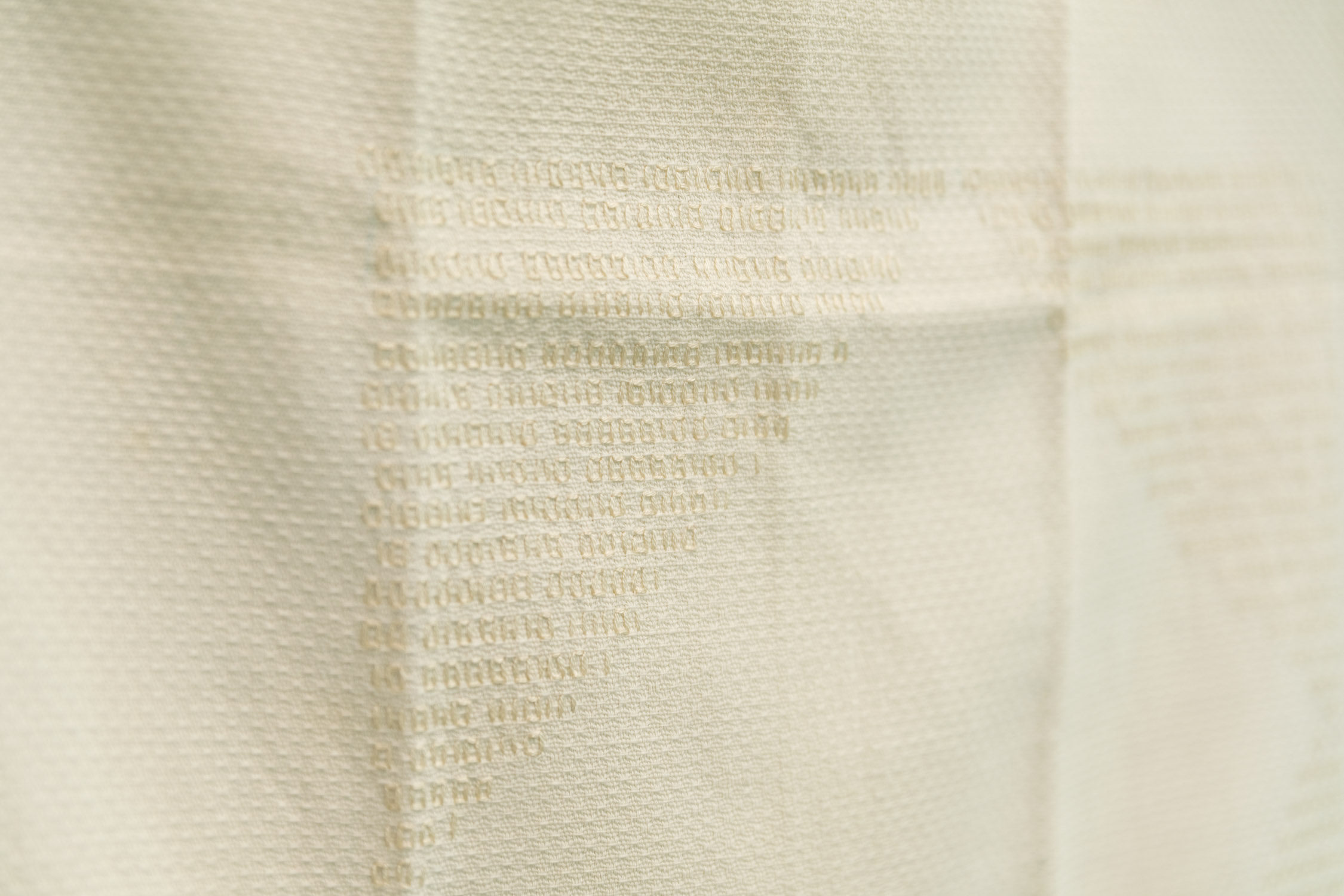
NB Absolutely, because this is tangible; if you're talking about the volatility of information you're also talking about literally tangible information. Encoding is a really key element of the exhibition. I feel like the practice of encoding is a sort of coping mechanism that maybe starts individualized in some way, but it reaches out. You need to learn how to encode and that's how you reach out to the previous generation. That's the other big connection that's made. It's not just the information between the people that you're trying to reach, which is more perhaps in line with the other shows as well, but to the older generations. Obviously in the US post-Roe, it's history repeating.
Maybe you can talk about the process of doing that because maybe it’s the first time that, as Midgray, you involved Simon's mother.
KB Yeah, I did like what you said about learning to encode because I think it can also be a solitary pursuit. Anybody who's ever done that kind of work knows what it's like to just sit and wait until two in the morning, bashing your head against a problem and reaching out to people who in the past have had these problems to try to find a solution through other people’s experiences.
So, the reason it was really important for me to do this work with Pat Boas, Simon's mother, was because I really liked bringing in the perspective of somebody who was alive pre-Roe and who had been a part of that struggle. She had seen their generation prevail in achieving that right—though now we can see it wasn't necessarily a right so much as a loophole of which we were taking advantage.
In the past, we had worked together on wallpaper for a show that she was a part of at the Sun Valley Museum of Art commemorating women's suffrage. That was a huge moment in history for women and I liked the idea of carrying that through to today. I asked that the wallpaper kind of be a little bit derivative of the previous one that we had worked on together because I liked the idea of pulling that thread from this big moment where women got this right to now where we are being stripped of rights.
With Roe a lot of people were really concerned that we were going back to our pre-Roe society, but we're not. It's changed too much, the landscape with the internet, with the availability of pills. I think that connects to your first question about information being power. In this case, there is a really strong activist movement right now that's winning a lot. I think it is because of the amount of information that's out there, thanks in large part to the internet. I think that there's an acknowledgment that we're not going back. You can't prevent women from seeking and receiving abortions at the scale you could have pre-Roe. That is, in large part, thanks to technology.
But on the other hand, the internet has made us incredibly vulnerable to digital surveillance. There have already been cases of account activity being used as evidence to charge people for leaving the state to seek abortion care.
NB Another thing that I wanted to talk about a little was the public sculpture that you've done with the refugees—with the emergency blankets—it seems like there are recurring references to tactility and materiality in your work, especially in this new exhibition. I noticed that also—in Simon's pieces—they're all very folded. There is this whole patchwork quality to everything. It's all very much revolving around these layers. So that kind of made me think about the contrast between the seamlessness of information and the tactile sort of ethereal information and the tangible quality of the objects. It makes me think about how society and human rights are also kind of abstract and palpable—fleeting concepts as well, and also tangible experiences.
This is a bit of a generic question, and in some ways, we kind of talked about it, but in what way do you think this new show of yours is building on your previous exhibitions and how is it different? I already mentioned the idea of interactivity. Maybe it’s different in that sense, but in what other way do you think It's different?
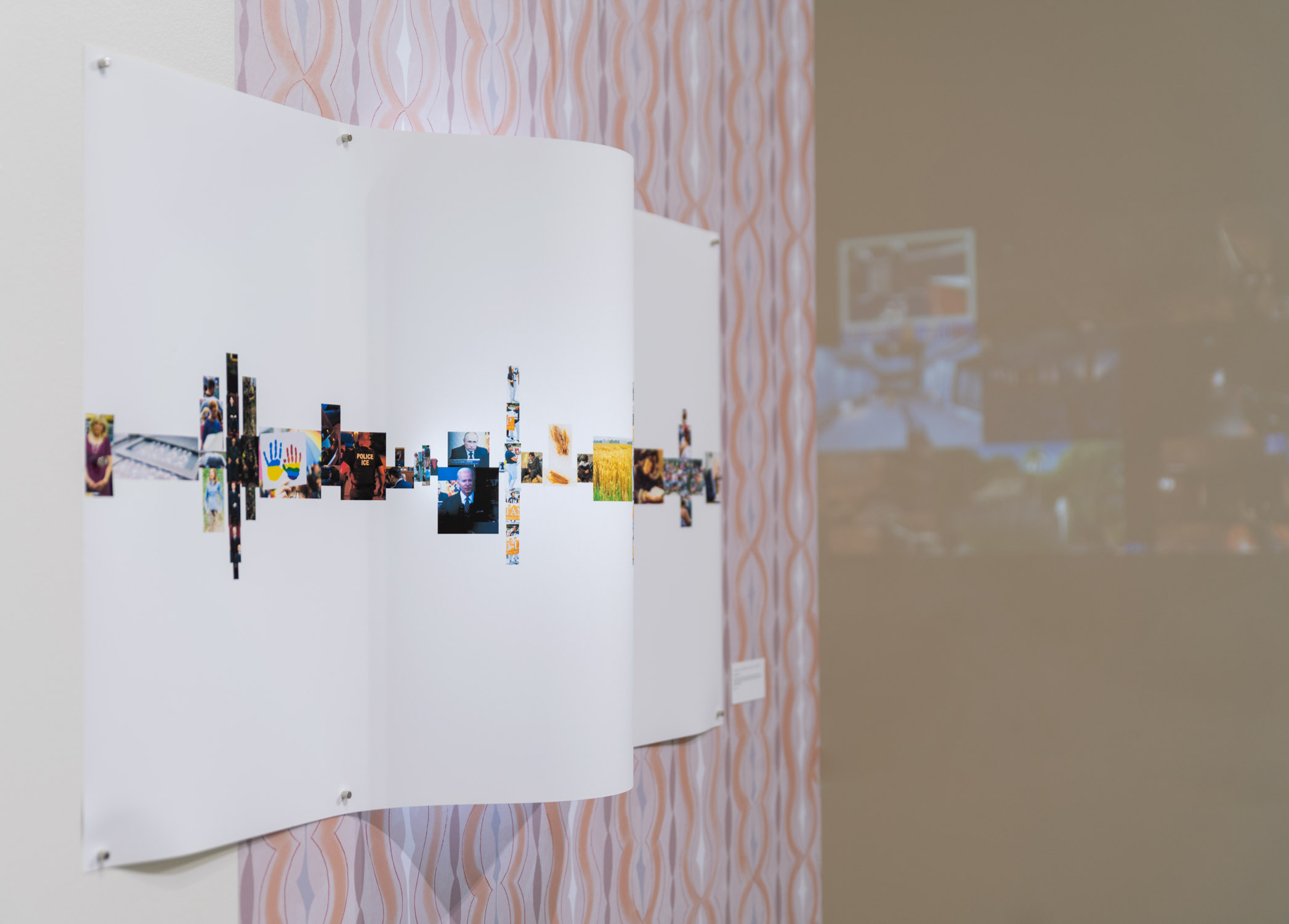
SB We were talking about Slow Friction which, on the surface, has some connections in terms of the mathematical processes I used—gradients being numbers that incrementally change. But underneath the audiovisual experience that was nice to sit in for a while—or so was told by visitors–I worked on the concept of the music part with our friend Keith McGraw. It was based on this idea of only noticing change when it's extremely incremental. The music in that piece is defined by this concept of acoustic beating, which is when two frequencies are just close enough together, but not quite the same, that they start canceling each other out. You start hearing this kind of patchwork of sound. That concept is something that I carried over into this work and fed into it.
The work isn’t just about how our world gets smoothed out and made palatable. It's also about how we become accustomed to the dramatic swings and changes in information that we're given. The reversal of Roe—to take the main example of our show—it feels sudden. But it wasn’t a sudden thing–few political and cultural shifts are. We were talking earlier about warrior culture. We had four years of Trump in the US, but there was proto-fascism or fascism in the US before that as well. That idea is what really connects my previous and current work. Despite resulting in dramatically different outputs in terms of artistic production, they're really about the same core concepts.
I also want to say that Kris and I have in the past done work that's a lot more directly or traditionally collaborative, where we are doing different parts of the same project to make one thing—one installation or a small series. This time around we organically wound up making our own work. But it's very much still Midgray work because it's very much from the same body. We're always making work that's about our preoccupations, the conversations we have with each other, and the conversations we don't have with each other because we don't want to talk about this stuff all the time. The connection is there. There's this core to the work that we've done that you can define in a few different ways, but the shape of it is still very much intact.
KB Yeah. Nicola, I like what you said about the idea of human rights being both tangible and intangible. That is present in this work because I think Americans have this idea of human rights as freedom to. We have the freedom to do x. I have the freedom to own a gun. I have the freedom to live how I see fit.
And I think there are a lot of other countries, especially compared to any of our peers on the world stage, where the attitude is more freedom from. Freedom from oppression, hatred, and violence. And I think you can really see the way that difference manifests in this show. Simon's work really explores the results of a freedom to cultural attitude. It’s the highest point on the bell curve. It’s often the result of a society that values the freedom to do something over protecting its citizens.
I think the part of the show that has to do with Roe is interesting because not only do people not have the freedom to do something any longer, but we also don't have freedom from sexist oppression. I think that's a really interesting thing to highlight in this show.
SB So, in short, this show is about prepositions.
KB Yes . . . it's the new Schoolhouse Rock song about prepositions.
NB That's great. I think it's a great tagline perhaps to end with.
photo credit: Mario Gallucci
